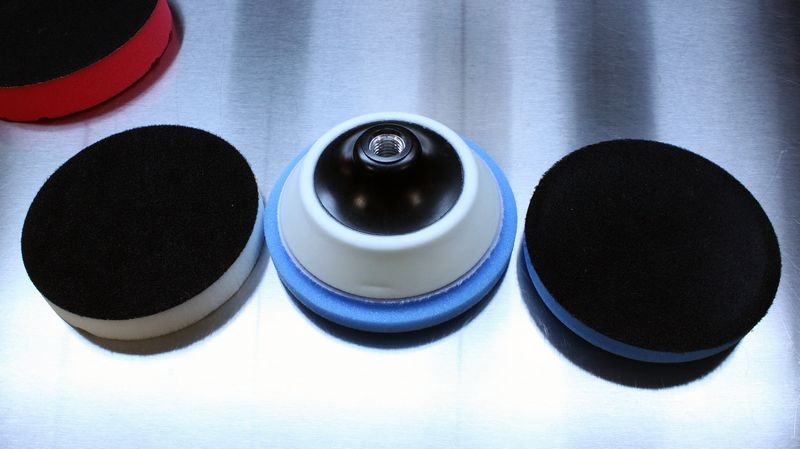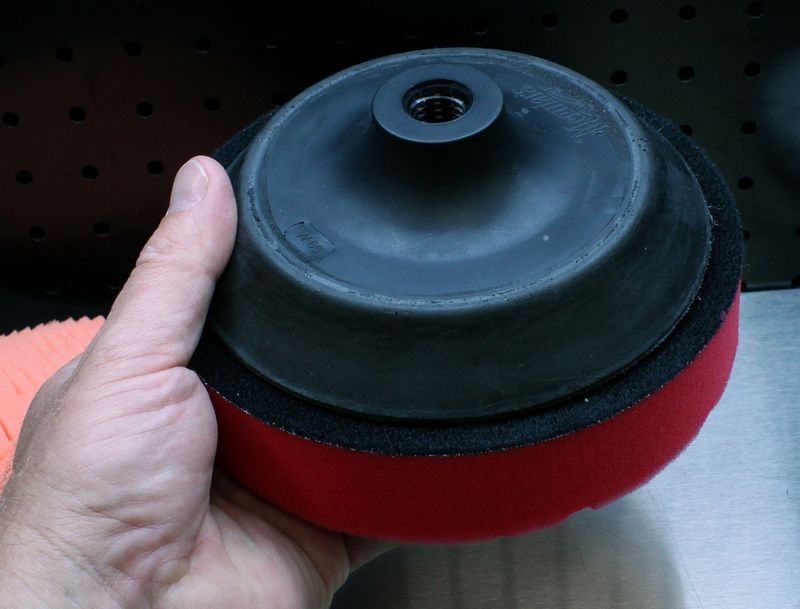Mike Phillips
Administrator
The New FLEX PE14-2-150 Rotary Buffer
At SEMA 2010, Flex introduced their brand new compact Rotary Buffer. I was honored to receive the #2 production unit and it's already seen lots of use at this year's SEMA show. In fact I encouraged everyone that stopped by our booth to test it out and most people did.
The fit and finish is excellent on this new lightweight rotary buffer and I'll stick to what I said in the video we made with Bob Eichelberg and that is it's the Mercedes-Benz of lightweight and compact rotary buffers...
Here's a new video we shot with Bob Eichelberg, the President of Flex North America, just a few weeks before this new rotary buffer was introduced at SEMA
The new PE14-2-150 Flex Rotary Buffer actually starts out at 400 RPM via the trigger and sets at 600 RPM with the trigger lock engaged for the low RPM
The maximum RPM is 2100 RPM and that's actually a good call on the part of the Flex Engineers as you just don't need or want higher speeds for working on modern clear coats.
High speeds with a rotary buffer can lead to extreme heat build-up on the paint surface causing burn-through or as our friends on the other side of the pond call it, strike-through.
For years and probably decades I've seen others post that heat is necessary to break-down diminishing abrasives in compounds and polishes and this is a common miss-understanding. Diminishing abrasives are broken down under pressure over time and heat is an un-necessary and un-wanted by-product.
This new rotary buffer offers the power of a full size rotary buffer in a compact size. We couldn't get it to bog down when you put it under heavy load and the body never became hot under use at the SEMA show; of course the real test will be a full size car.
One of the best new features for this rotary buffer is flex redesigned it to move plenty of air through the body of the tool to keep the motor and drive mechanism cool while buffing at low RPM's. Without an air flow design like Flex has introduced, other buffers risk overheating when operating over time at low RPM's as not enough air is moved through the body of the tool to keep temperatures cool.
Large vents and an internal fan provide superior air flow to keep the polisher cool

Flex recommends a max buffing pad size of 7" but they say it will also work with 8" pad with no problems.
If you're looking to step up to using a rotary buffer or looking to replace you're current model, I'm confident you're going to love this new compact model from Flex. The lightweight and compact size makes learning to use the rotary buffer easier than traditional full size, heavier units.
I give it Two Thumbs Up!

Check it out here,
FLEX PE14-2-150 Rotary Polisher

At SEMA 2010, Flex introduced their brand new compact Rotary Buffer. I was honored to receive the #2 production unit and it's already seen lots of use at this year's SEMA show. In fact I encouraged everyone that stopped by our booth to test it out and most people did.
The fit and finish is excellent on this new lightweight rotary buffer and I'll stick to what I said in the video we made with Bob Eichelberg and that is it's the Mercedes-Benz of lightweight and compact rotary buffers...
Here's a new video we shot with Bob Eichelberg, the President of Flex North America, just a few weeks before this new rotary buffer was introduced at SEMA
The FLEX PE14-2-150 Rotary Buffer
[ame="http://www.youtube.com/watch?v=YShAVw7zMkE"]YouTube - Autogeek's Show Car Garage - New FLEX PE14-2 Rotary Polisher[/ame]The new PE14-2-150 Flex Rotary Buffer actually starts out at 400 RPM via the trigger and sets at 600 RPM with the trigger lock engaged for the low RPM
The maximum RPM is 2100 RPM and that's actually a good call on the part of the Flex Engineers as you just don't need or want higher speeds for working on modern clear coats.
High speeds with a rotary buffer can lead to extreme heat build-up on the paint surface causing burn-through or as our friends on the other side of the pond call it, strike-through.
For years and probably decades I've seen others post that heat is necessary to break-down diminishing abrasives in compounds and polishes and this is a common miss-understanding. Diminishing abrasives are broken down under pressure over time and heat is an un-necessary and un-wanted by-product.
This new rotary buffer offers the power of a full size rotary buffer in a compact size. We couldn't get it to bog down when you put it under heavy load and the body never became hot under use at the SEMA show; of course the real test will be a full size car.
One of the best new features for this rotary buffer is flex redesigned it to move plenty of air through the body of the tool to keep the motor and drive mechanism cool while buffing at low RPM's. Without an air flow design like Flex has introduced, other buffers risk overheating when operating over time at low RPM's as not enough air is moved through the body of the tool to keep temperatures cool.
Large vents and an internal fan provide superior air flow to keep the polisher cool

Flex recommends a max buffing pad size of 7" but they say it will also work with 8" pad with no problems.
If you're looking to step up to using a rotary buffer or looking to replace you're current model, I'm confident you're going to love this new compact model from Flex. The lightweight and compact size makes learning to use the rotary buffer easier than traditional full size, heavier units.
I give it Two Thumbs Up!

Check it out here,
FLEX PE14-2-150 Rotary Polisher













